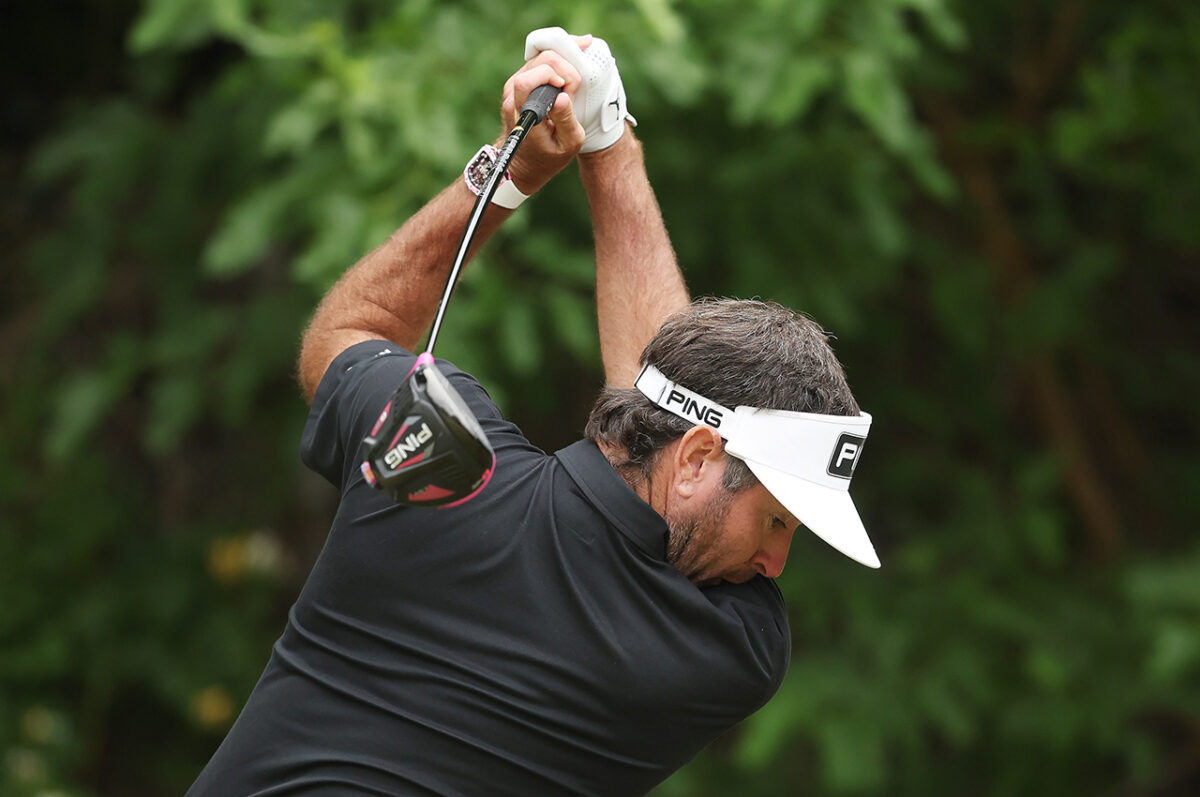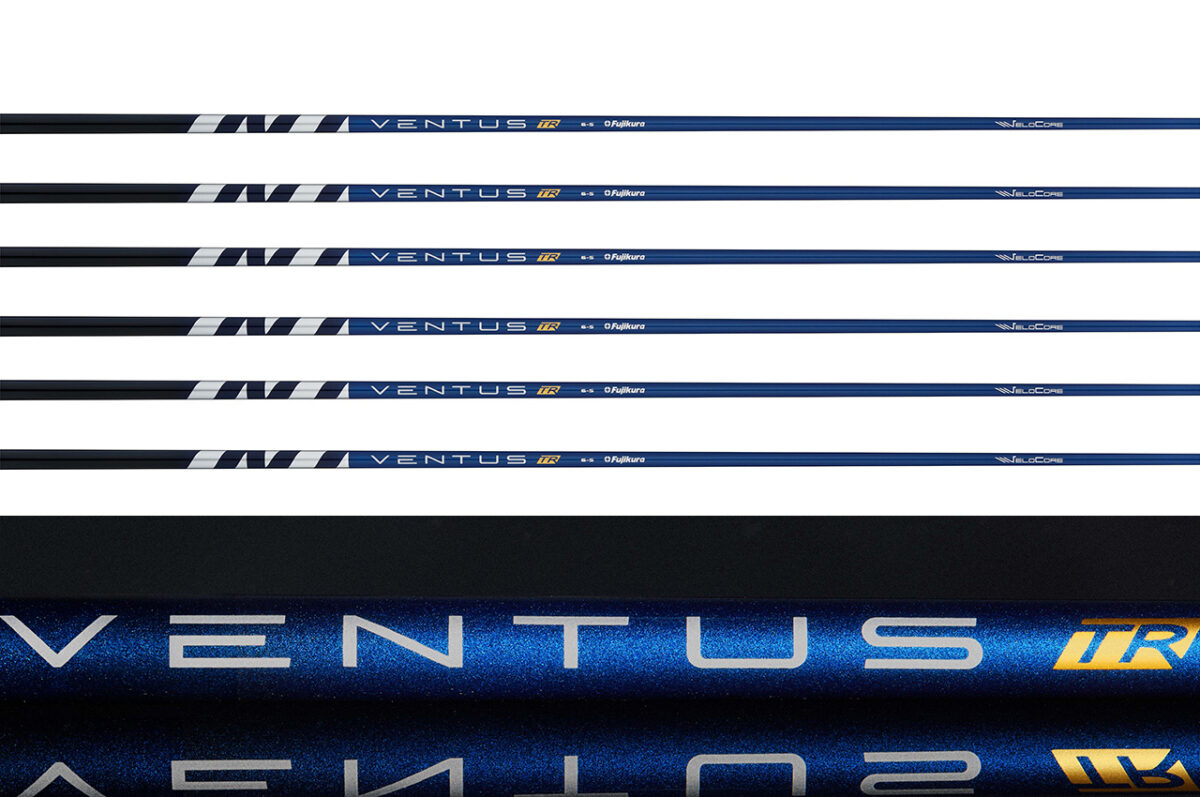Gear: Fujikura Venus Blue wood shaft (2024)
Price: $350
Available: February 29
In 2018, Fujikura released the first Ventus shafts, and like many things in the golf world, it took some time to gain momentum and acceptance, but from the start, the Ventus shafts had an intriguing story to tell.
[anyclip-media thumbnail=”https://cdn5.anyclip.com/8o4Ozo0B4tYbd-8KeXPc/1708559354778_248x140_thumbnail.jpg” playlistId=”undefined” content=”PHNjcmlwdCBzcmM9Imh0dHBzOi8vcGxheWVyLnBvcHRvay5jb20vYW55Y2xpcC13aWRnZXQvbHJlLXdpZGdldC9wcm9kL3YxL3NyYy9scmUuanMiIGRhdGEtYXI9IjE2OjkiIGRhdGEtcGxpZD0iaGJ4dGl0MzJuNHllZW5kdWxmcmdpbGp5am5zdnF1ZGQiIHB1Ym5hbWU9IjE5OTgiIHdpZGdldG5hbWU9IjAwMTZNMDAwMDJVMEIxa1FBRl9NODMyNyI+Cjwvc2NyaXB0Pgo8c2NyaXB0IHR5cGU9ImFwcGxpY2F0aW9uL2xkK2pzb24iIG5hbWU9ImFjLWxyZS1zY2hlbWEiPgogewogICJAY29udGV4dCI6Imh0dHBzOi8vc2NoZW1hLm9yZyIsCiAgIkB0eXBlIjoiVmlkZW9PYmplY3QiLAogICJuYW1lIjoiRnVqaUt1cmEgVmVudHVzIEJsdWUgKDIwMjQpIiwKICAiZGVzY3JpcHRpb24iOiJGdWppa3VyYSBoYXMgcmVsZWFzZWQgYSBuZXcgdmVyc2lvbiBvZiB0aGVpciBwb3B1bGFyIFZlbnR1cyBCbHVlIHNoYWZ0IGZvciAyMDI0LiBUaGUgbmV3IHZlcnNpb24gZmVhdHVyZXMgVmVsb2NvcmUgcGx1cyB0ZWNobm9sb2d5IGFuZCBhIHRoaXJkIG1hdGVyaWFsLCByZXN1Li4uIiwKICAiZHVyYXRpb24iOiJQVDJNMzcuMTg0UyIsCiAgInRodW1ibmFpbFVybCI6Imh0dHBzOi8vY2RuNS5hbnljbGlwLmNvbS84bzRPem8wQjR0WWJkLThLZVhQYy8xNzA4NTU5MzU1MDQxXzQ4MHgyNzBfdGh1bWJuYWlsLmpwZyIsCiAgInVwbG9hZERhdGUiOiIyMDI0LTAyLTIxVDIzOjQ0OjMxLjcwOFoiLAogICJpbnRlcmFjdGlvblN0YXRpc3RpYyI6ewogICAiQHR5cGUiOiAiSW50ZXJhY3Rpb25Db3VudGVyIiwKICAgImludGVyYWN0aW9uVHlwZSI6IHsgIkB0eXBlIjogImh0dHA6Ly9zY2hlbWEub3JnL1dhdGNoQWN0aW9uIiB9LAogICAidXNlckludGVyYWN0aW9uQ291bnQiOiAzOTIKICB9CiB9CiA8L3NjcmlwdD4=”][/anyclip-media]
Drivers are often designed to enhance stability and forgiveness, but the Ventus shafts were made to make every driver more stable and forgiving thanks to the addition of a unique material called VeloCore, a multi-material bias core construction technique that Fujikura developed. By making the Ventus shafts more stable during your transition from the backswing to the downswing and at impact, many golfers found that Ventus shafts helped them make solid contact more often, and as that happened, they gained confidence and swung more freely, leading to more club head speed, increased ball speed and extra distance.
Since its debut in Ventus wood shafts, VeloCore has branched into graphite iron shafts with the 2023 release of the Axiom, helping players get the same benefits from the fairway that Ventus provides off the tee.

Now, six years later, Fujikura is releasing the next generation of Ventus shafts, starting with the Blue, which features VeloCore+. While the original VeloCore was made using two materials, a third material has been added to the design to enhance stability further. While Fujikura is mum on the extra recipe for VeloCore+, like the original, it runs the length of the 2024 Ventus Blue to help create a smoother-feeling, more-stable shaft that Fujikura claims will help golfers tighten dispersion off the tee and add ball speed.
The new Ventus Blue shaft has the same profile as the 2018 version it replaces, offering a mid-launch and low-spin option for a wide range of players. However, it is not replacing the Ventus Blue TR shaft that was released in 2022.
The original Ventus shafts were offered in Blue, Black (low-launch, low-spin) and Red (mid-high launch, mid-spin) profiles. Still, so far, Fujikura has only announced the release of the updated Blue model, which will be available in weights ranging from 58 grams (Ventus 5) up to 94 grams (Ventus 9) in flexes from R2 (Lite, Senior), R, S and X.





